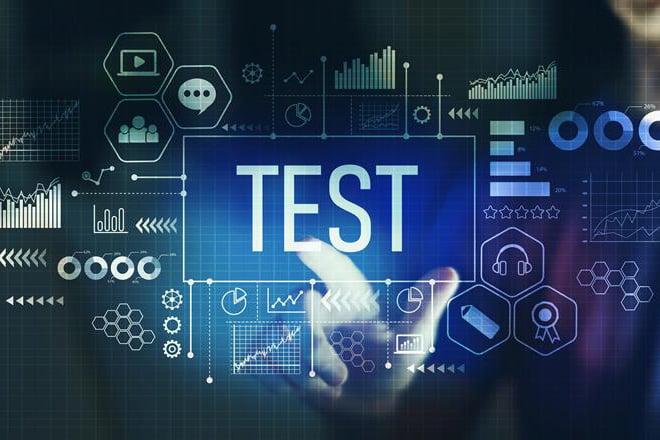About the author: Guus Rutten is Managing Director Data Services at GX (part of Happy Horizon). GX is one of this year’s sponsors of the DDMA Digital Analytics Summit.
Understanding Look-alike Modeling
Look-alike modeling leverages data science techniques to create segments of potential customers who exhibit behaviors and attributes similar to your target audience. By analyzing the data of your most valuable customers, the model can identify individuals with a high probability of converting.
Key Factors for Success
The quality of seed data is critical to the success of look-alike modeling, as the results of the model are heavily dependent on the data used. The following factors collectively ensure the integrity of the model:
- Accuracy: Make sure the segment closely aligns with the traits and behaviors of the intended audience. This requires confirming that the people within the seed segment share the relevant characteristics of the target group.
- Completeness: Include a comprehensive set of relevant attributes to capture the nuances of the target audience. This may involve considering demographic factors, purchase history, website behavior, and other relevant data points.
- Consistency: Maintain data integrity throughout the modeling process to ensure that the data is consistent and free from errors. This involves verifying data accuracy, resolving inconsistencies, and addressing missing values.
- Timeliness: Use up-to-date data to reflect the latest trends and changes in customer behavior. Outdated data can lead to inaccurate models and ineffective targeting.
- Validity: Ensure that the data is reliable and relevant to the modeling objectives. This involves verifying the data source, assessing data quality, and considering the potential biases or limitations of the data.
- Uniqueness: Prevent duplicate profiles from skewing the model by ensuring that each individual is represented only once in the seed segment. This helps to avoid overrepresentation of certain individuals and maintain a balanced representation of the target audience.
Without these critical components in place, the modeling process cannot proceed effectively, as inaccurate or incomplete data would lead to poor results — a classic case of “garbage in, garbage out.” Therefore, ensuring the quality of the seed data is a foundational step in creating a successful look-alike model.
The Look-alike Modeling Process
Look-alike modeling is a powerful technique for identifying high-value prospects by finding individuals who share similar characteristics with your existing customers. This process involves several steps that leverage data science to create targeted segments. While data plays a crucial role, this approach makes it feasible to implement look-alike modeling within a relatively short timeframe, regardless of business size, industry, or digital maturity.
- Step 1: Data Mining: Gather and assess the necessary data from various sources, including first-party data (e.g., CRM, CDP, website analytics) and potentially third-party data (e.g., demographic information, purchase history). Identify the specific data required for look-alike modeling and determine its availability within existing systems or external sources. Clearly define the target segment to focus the data collection and analysis process.
- Step 2: Business & Data Understanding: In addition to analyzing the data’s value and identifying potential anomalies, it’s crucial to incorporate business logic to ensure that the model is both logical and accurate. This includes gaining a deep understanding of each data point’s significance, how it relates to the target audience, and ensuring alignment with real-world business dynamics. The human factor plays a key role here, as business insights help verify the model’s correctness and relevance.
- Step 3: Fuzzy Matching: Employ fuzzy matching techniques to identify and exclude duplicate profiles, ensuring that each individual is represented only once in the seed segment. This helps to avoid overrepresentation of certain individuals and maintain a balanced representation of the target audience.
- Step 4: Data Exploration: Clean and transform the data as needed to prepare it for modeling. This may involve handling missing values, normalizing data, and creating new features. The data provided can be numerical or categorical; either way, the model can only use numerical data.
- Step 5: Modeling: Build and train the look-alike model using a suitable machine learning algorithm. Consider factors such as the size of the dataset, the complexity of the relationships between features and the target variable, and the desired level of interpretability when selecting the algorithm.
- Step 6: Evaluation: Assess the model’s performance using appropriate metrics, such as accuracy, precision, recall, and F1-score. Continuously evaluate and refine the model to ensure its effectiveness and identify areas for improvement.
Benefits of Look-alike Modeling
Look-alike modeling, a strategic approach to customer acquisition, offers businesses a multitude of benefits. By leveraging data-driven insights, this technique enables marketers to enhance targeting precision, improve return on investment, attract new customers, and personalize customer experiences.
- One of the key advantages of look-alike modeling is its ability to reach highly relevant audiences with greater accuracy. By identifying individuals who share similar characteristics with existing customers, businesses can tailor their marketing efforts to those most likely to convert. This precision not only reduces wasted advertising spend but also increases the efficiency of marketing campaigns.
- Moreover, look-alike modeling can improve ROI by optimizing marketing budgets and driving higher conversions. By focusing on high-value prospects, businesses can reduce acquisition costs and increase revenue. Additionally, the insights gained from look-alike modeling can be used to refine marketing strategies and tailor campaigns to specific audience segments, further enhancing ROI.
- Another significant benefit of look-alike modeling is its ability to attract new customers. By identifying individuals who share similar characteristics with existing customers, businesses can expand their reach and acquire new customers who are more likely to be a good fit for their products or services. This can lead to long-term loyalty, increased profitability, and sustainable growth.
- Furthermore, look-alike modeling provides valuable insights into customer behavior and preferences. By analyzing the data of existing customers and identifying common patterns, businesses can gain a deeper understanding of their target audience. These insights can be used to refine marketing strategies, tailor messaging, and personalize customer experiences.
- Finally, look-alike modeling enables businesses to deliver personalized experiences that resonate with individual customers. By understanding customer preferences and tailoring messaging and offers accordingly, businesses can increase engagement, build stronger relationships, and drive higher conversion rates.
Challenges and Considerations in Look-Alike Modeling
While look-alike modeling offers significant benefits, it is essential to be aware of the potential challenges and considerations involved to ensure its effectiveness.
Data Quality: The integrity, completeness, and relevance of the data used in look-alike modeling are essential. It’s important to ensure that the data is accurate, comprehensive, and truly representative of the target audience. Errors, missing data, or biases can result in flawed models and poor targeting outcomes.
Model Complexity: Avoid overfitting the model, which occurs when the model becomes too complex and fits the training data too closely, potentially hindering its ability to generalize to new data. Carefully select the model complexity and tune its hyperparameters to strike a balance between underfitting and overfitting.
Ethical Considerations: Address privacy concerns and ensure fair and unbiased targeting. Comply with relevant data protection regulations and obtain necessary consents. Avoid discriminatory targeting based on protected characteristics and ensure that look-alike models are not used to perpetuate biases or stereotypes.
Dynamic Nature of Audiences: Recognize that customer behavior and preferences can change over time. Regularly update and retrain the look-alike model to incorporate new data and adapt to evolving trends. This ensures that the model remains relevant and effective in identifying high-value prospects.
By carefully addressing these challenges and considerations, businesses can maximize the benefits of look-alike modeling and leverage its power to drive customer acquisition and growth.
Conclusion
Look-alike modeling is a powerful asset for businesses seeking to optimize customer acquisition through digital analytics. By leveraging data-driven insights and advanced analytics, businesses can create precision-targeted campaigns that resonate with their ideal audience, leading to improved ROI, higher acquisition rates, and more personalized customer experiences. Effectively utilizing look-alike modeling enables businesses to meet their marketing objectives and thrive in today’s competitive, data-centric landscape, driving growth and long-term success.
Would you like to know more about how an organization can effectively implement and optimize look-alike modeling to ensure optimal performance and achieving marketing objectives. Check out this case from Roularta.
Ook interessant

Incrementality Testing: Onmisbaar voor echte inzicht in mediawaarde

From Decoration to Direction: Why Analytics Only Matters When It Drives Action


